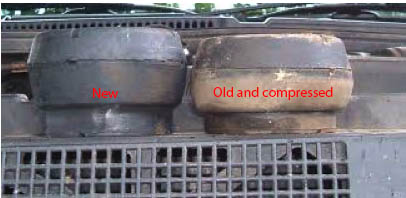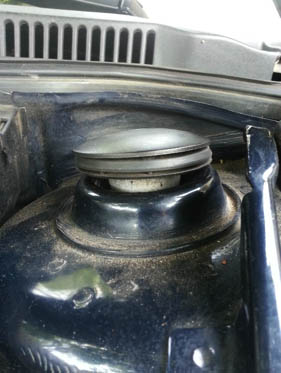The streets of Brooklyn are notoriously rough. Not the people, the actual road surfaces. When you drive over speed bumps in parking lots, potholes in backlanes, and the breaks in the road everywhere else, any problems with your suspension are accentuated. If your strut mounts are worn, this is where they are going to tell you.
It's a common problem in several Volkswagen models. Jettas, Passats, New Beetles, and Golfs all have similar designs, though the others aren’t exempt. Here’s what you’ll find:
- As you drive over any surface that creates travel in your struts, you’ll probably hear a rattling noise from the front. It can happen on just slight suspension travel, over only bigger bumps, or it could happen all the time.
- Over larger bumps or potholes, you’ll get a loud clunk. It’s not exactly a metallic noise – it sounds dampened. This noise happens when the strut is fully extended.
- When you turn, you might get some noise and you might not. If your strut mounts are badly worn, you’ll probably get a clunk noise when you turn as well.
- Your steering wheel may not sit straight when you’re driving straight, or the steering wheel position may shift unexpectedly.
- In extreme conditions, the strut can punch through the top of the strut mount, maybe even causing an accident or crash.


The issue is the material used for the upper strut mounts. Over time, the rubber used to make the strut mounts compresses under the weight of your car. That’s all fine and well, except now there’s a gap at the top of the strut where it mounts to the body at the top of the wheelhouse. This gap is the cause of all that racket you hear as you go over bumps.
Not only is the noise annoying but it can cause other trouble as well. When the strut mounts are compressed or squashed, there is vertical travel in the tire that shouldn't be there. This travel means your wheel alignment is never accurate as your wheel is free to move around. The evidence is in your tire wear – when your strut mounts are worn, you’ll quickly notice premature wear on the shoulders of your tire.
There are aftermarket manufacturers that have corrected the flaw in VW’s strut mount design. Instead of using rubber, they use an alternate material such as polyethylene that holds up much better under the weight of your car.
Replacing the strut mounts is an important job. If the problem is detected and corrected early enough, you can prevent dangerous driving conditions, excess tire wear, and undue stress on other suspension components.
To correct squashed strut mounts takes less than a day in the shop. The struts are removed, the upper strut mount is replaced, and the struts are reinstalled. Afterwards, a wheel alignment is necessary to get your vehicle driving straight once again.
Do you have the symptoms of worn-out strut mounts in your VW? L and M Foreign Cars can help. We know your VW inside and out and are equipped to deal with all of your concerns, including your strut mounts. Call us or drop in today!